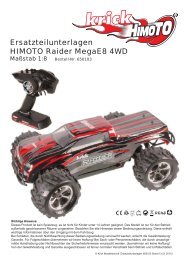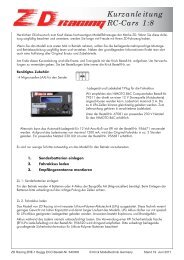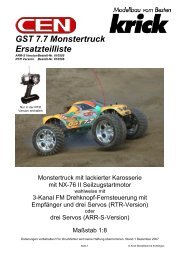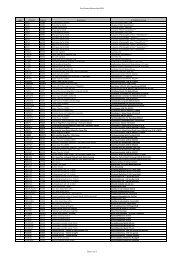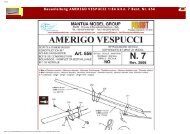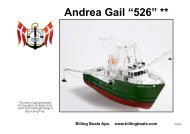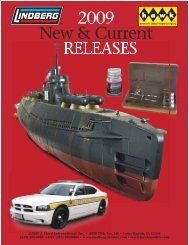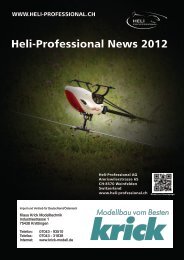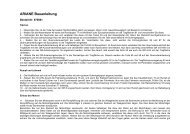Create successful ePaper yourself
Turn your PDF publications into a flip-book with our unique Google optimized e-Paper software.
THE DRAGON<br />
In 1928 the Royal Yachtclub in Gothenburg, Sweden,<br />
arranged a competition for the construction of a cheap<br />
yacht with single or double cabin. The boat should both<br />
be suitable for regattas as well as for pleasure trips.<br />
The well known Norwegian shipbuilder Johan Anker<br />
won the competition with the DRAGON. Originally<br />
a Scandinavian type of wood was used for the<br />
boat. However, since the boat gained international<br />
recognition, mahogany has been used instead.<br />
The first DRAGON was built in 1929 in Gothenburg. In<br />
1930 the first Danish boat followed, and not until 1931<br />
did the Norwegians build their first DRAGON.<br />
The sailing qualities of the DRAGON are so good that<br />
the boat is practically used all over the world, and<br />
especially in Europe, where it has become extremly<br />
popular.<br />
In the course of time, the DRAGON has gradually been<br />
changed into a regatta boat, and it is no longer built in<br />
accordance with the original specifications. Both the<br />
cabin and the canvas have been changed, so today it is<br />
actually only the hull, which is original.<br />
In 1948 the DRAGON was made on olympic class<br />
of boats, and all measures were stipulated by the<br />
international Yachting Union.<br />
Since 1928 this type of boat has paritcipated in<br />
numerous Scandinavian and international regattas and<br />
it is still one of the most popular boats.<br />
FIG. 1: ASSEMBLY OF KEEL<br />
Place keel pieces A + B on Fig. 5, drawing 8111-1,<br />
with a space approx. 4mm wide between the two<br />
pieces. Glue brass tube no F747 in the space with twocomponent<br />
cement.<br />
Glue scarves 13A, 14A and 15A on one side of the keel.<br />
When dry, glue the corresponding pieces (13A, 14A,<br />
15A) on the other side. Mount the keel support no. 16.<br />
FIG. 2: ASSEMBLY OF FRAMES<br />
Place the frames on the keel as shown, but do not glue<br />
yet. Check the amount of sanding neccessary to give<br />
the maximum possible gluing surface for the planking<br />
strips (see also fig. 4).<br />
Shape the assembly strips no. 17 and 18 and glue.<br />
Position the deck no. 20 and maststep no. 30. Make<br />
sure that all frames etc. can easily be fitted. Frames<br />
must never be forced into place on the keel.<br />
FIG. 3: PLANKING<br />
Begin planking from the deck and work downwards.<br />
See the section ”Wooden Hull” in the Building Tips<br />
leaflet.<br />
FIG. 4 + 5: HULL SECTION<br />
These drawings show how the individual parts are to be<br />
positioned on the hull. Do not mount the keel until work<br />
on the hull has been completed.<br />
FIG. 6, 7 AND 8: RUDDER, MAIN FRAME AND DECK<br />
Glue the rudder stock no. F748 with two-component<br />
cement in the slot resulting from the gluing of pieces no.<br />
34 and 34M. Mount fitting no. F10 (see also Drawing<br />
8111-2). The construction of the cabin is shown on Figs.<br />
7 and 8 and Drawing 8111-2.<br />
DRAWING 8111-2: MAST, BOOM, SAILS AND<br />
FITTINGS<br />
Glue the two sections of the mast and boom together.<br />
A slot for the sail rope will be formed. Avoid letting glue<br />
run into this slot during assembly.<br />
Sand the mast and boom to shape as shown and insert<br />
the mast in brass tube no F785, which is attached to the<br />
maststep no. 30 and deck no. 20.<br />
Cut out the sails as shown, remembering to add 5-6 mm<br />
for seams on all edges. Sew a piece of rigging thread<br />
F74 (no. 42) in the mast and boom seams to edge<br />
of the main sail for the battens, which are cut out of<br />
celluloid (no. 44) as illustrated.<br />
Mount the remaining fittings and the rigging as shown.<br />
3



